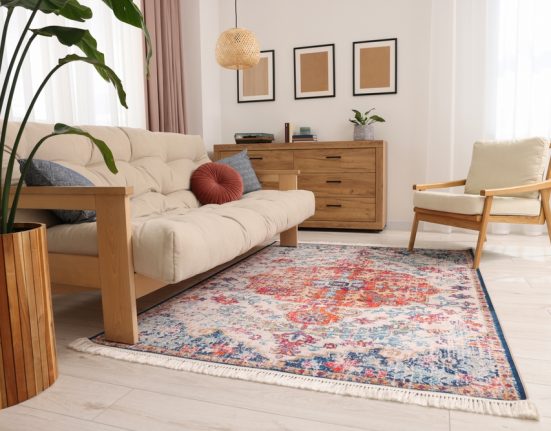As well as some clever paint tricks from design experts
The choice of colour in your home can be a purely emotive decision, based on the shades and tones that provide joy, or it can be a design tool to, for instance, draw the eye to interesting architectural details like high ceilings, better hide scuffs and scrapes in a hallway, or to zone off areas of a room for different functions.
Room colours can also have a huge impact on how big or small a room will look and feel, either with a visual effect – like a bright and glossy white that can bounce natural light around – or psychological trickery – a cheery and uplifting yellow can offset the claustrophobic nature of a cramped space.
“The most obvious choice for making a small room appear spacious is opting for a bright, neutral shade like white,” says Kelly Collins, interior designer and head of creative at Swyft Home. “Don’t be afraid to venture away from white walls though. When decorating our homes, we’ve long been schooled in the thought that painting walls black or even blue will make a room feel small, but that’s not always the case. Opting for dark, moody colours in your interior design palette actually creates the perception of depth, which helps to disguise the fact that your room is on the small side.”
Here we look at the top 5 paint colours that can make a room look bigger, as well as some clever paint tricks from design experts.
Crisp whites
White is the go-to paint choice for making a small room appear bigger. It is especially popular in kitchens and bathrooms where a crisp and clean scheme is preferable.
“We have seen such a shift in how we want our homes to look, feel, and function over the past three years,” says Tom Howley, Design Director of the eponymous kitchen company. “We need our homes to feel that much roomier, lighter, and brighter. White kitchens do this perfectly, offering an energising, transformative aesthetic to any space and mastering the art of illusion, making smaller rooms feel bigger.”
An all-white kitchen may be too clinical for some, in which case introducing contrasting shades in modest amounts won’t detract from a sense of space – just be sure to use them wisely.
“If you don’t fancy opting for an all-white, do be careful with contrasting wall and floor colours,” says Lizzie Beesley, Head of Design at Magnet. “The bigger the contrast, the smaller the room feels sense wise. Hence, it’s best to match light walls with light floors and tiles and then introduce other colours through accessories and hardware.”
Cheerful yellows
Using yellow in a small room has as much of a psychological impact as a visual one. A bright buttercup yellow is so cheerful and uplifting that it can soften the imposing or claustrophobic nature of small rooms.
There are a few clever paint tricks that can be utilised here too.
“Painting the ceiling in the same colour as the walls will draw the eye up and make the ceiling look higher than it really is – making the whole room look bigger in the process,” says Kelly. “Paint your woodwork and any feature mouldings a shade darker than any colour on the walls. This way, the architectural bones of the room become more prominent, and the walls recede a little.”
Natural greens
Using a natural and mossy sage is a clever design trick in any room that overlooks a garden or area of greenery. The blurring of the boundaries between outside and in can make your room feel like an extension of the view beyond, elongating and expanding the perception of space inside.
Rich teals
A flat colour on your walls that won’t react to sunlight does little for cramped spaces. Something with lots of rich undertones like a teal dances in natural light, warming up and cooling down as the day passes. A colour like this will enliven a small space – a great addition to cloakrooms or spare bedrooms.
Farrow & Ball’s Stone Blue and Blue Ground are both popular choices in this instance.
A great way to heighten a room is to paint your walls to a point just shy of the ceiling. “Another trick is to paint your wall colour up to around 10cm below the ceiling – or up to the bottom of the cornice – and then paint everything above it bright white. The extra band of white will allow the room to appear taller,” says Kelly.
A word on dark colours
There is a design argument for dark colours in smaller rooms, as long as it is well executed.
“Most people go for a lighter shade in smaller spaces, but the room can actually feel bigger with a dark colour – especially when you include the ceiling too” says paints expert, Aaron Markwell from COAT Paints. “Dark colours absorb light and blurring the hard edges of the space effectively softens them, so the room feels less enclosed. Darker shades of Navy like ‘2AM’, and even Off-blacks like ‘David Rose’ work amazingly, especially in bedrooms as they create a cocoon-like room which can help with a restful night’s sleep.”







